
How to Use LCD 16x2 attached i2c: Examples, Pinouts, and Specs
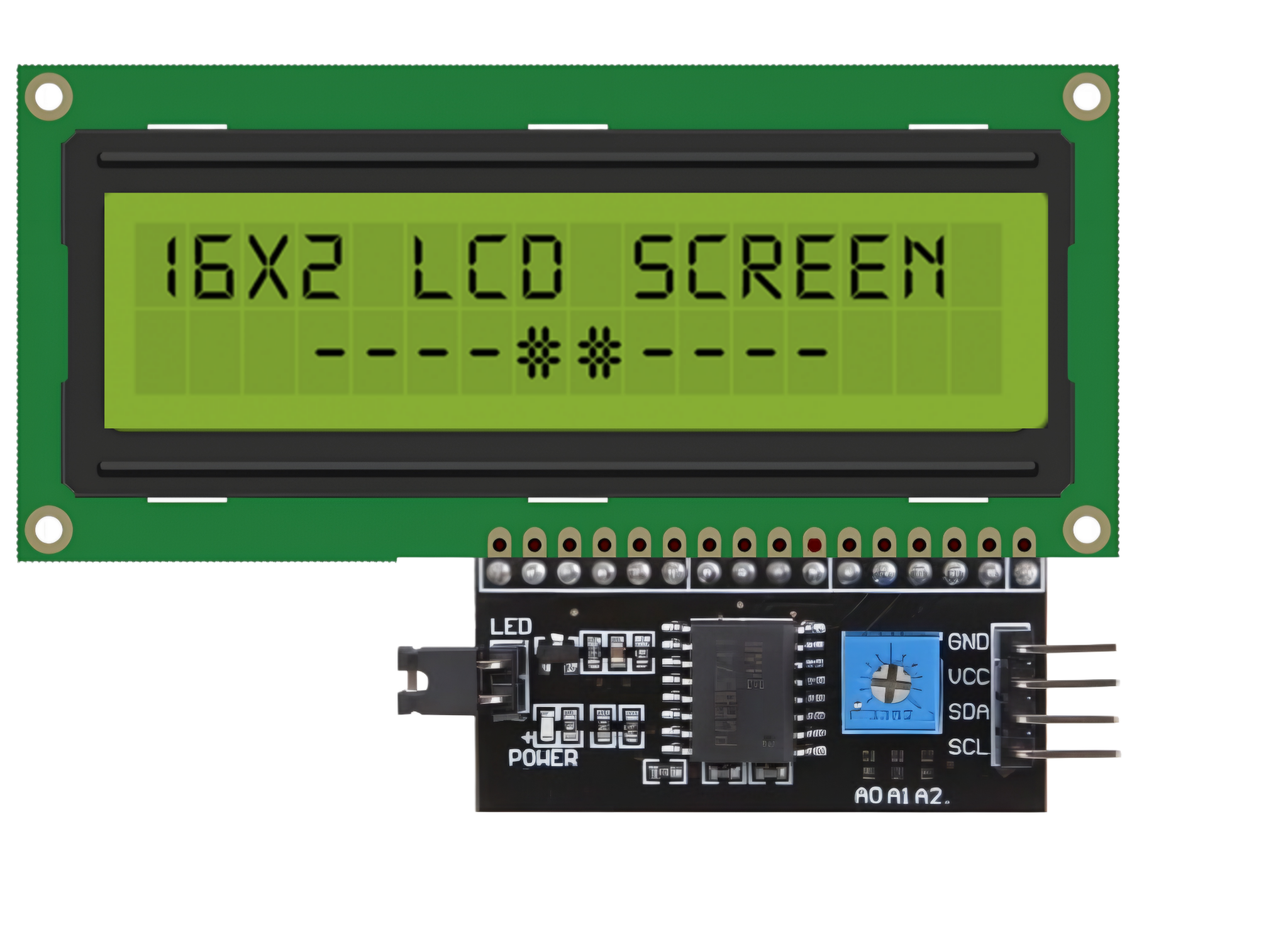
 Design with LCD 16x2 attached i2c in Cirkit Designer
Design with LCD 16x2 attached i2c in Cirkit DesignerIntroduction
The LCD 16x2 with I2C interface is a versatile and widely used display module capable of showing 16 characters per line across 2 lines. It is equipped with an I2C (Inter-Integrated Circuit) interface, which simplifies communication with microcontrollers by reducing the number of required pins. This makes it an excellent choice for projects where pin availability is limited or where simplicity is desired.
Explore Projects Built with LCD 16x2 attached i2c
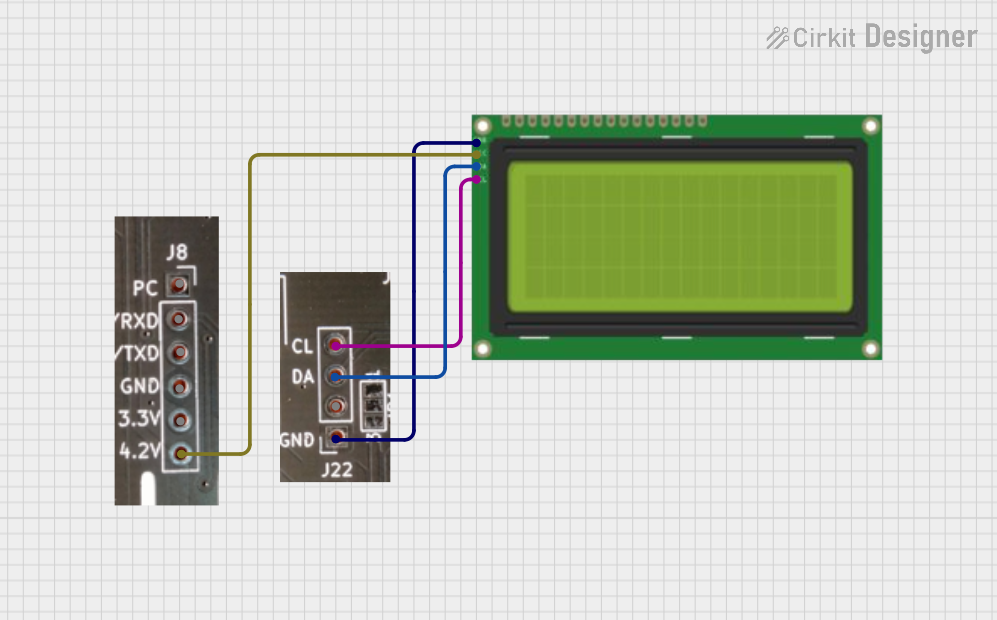
 Open Project in Cirkit Designer
Open Project in Cirkit Designer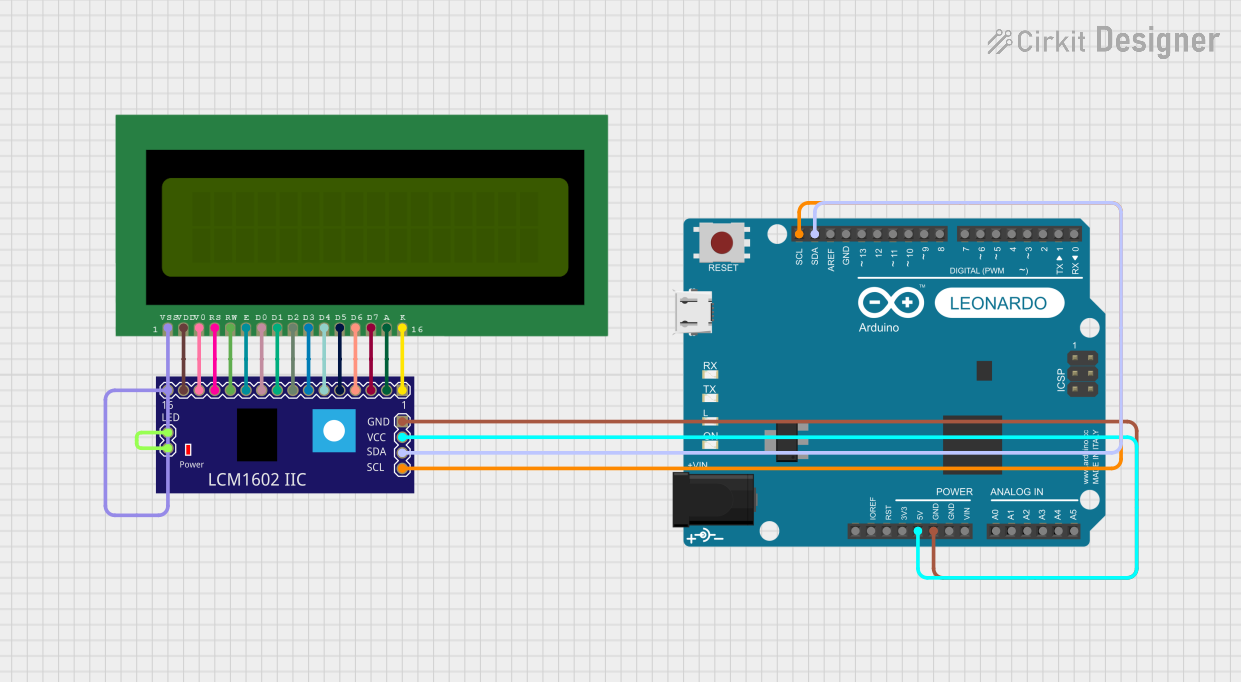
 Open Project in Cirkit Designer
Open Project in Cirkit Designer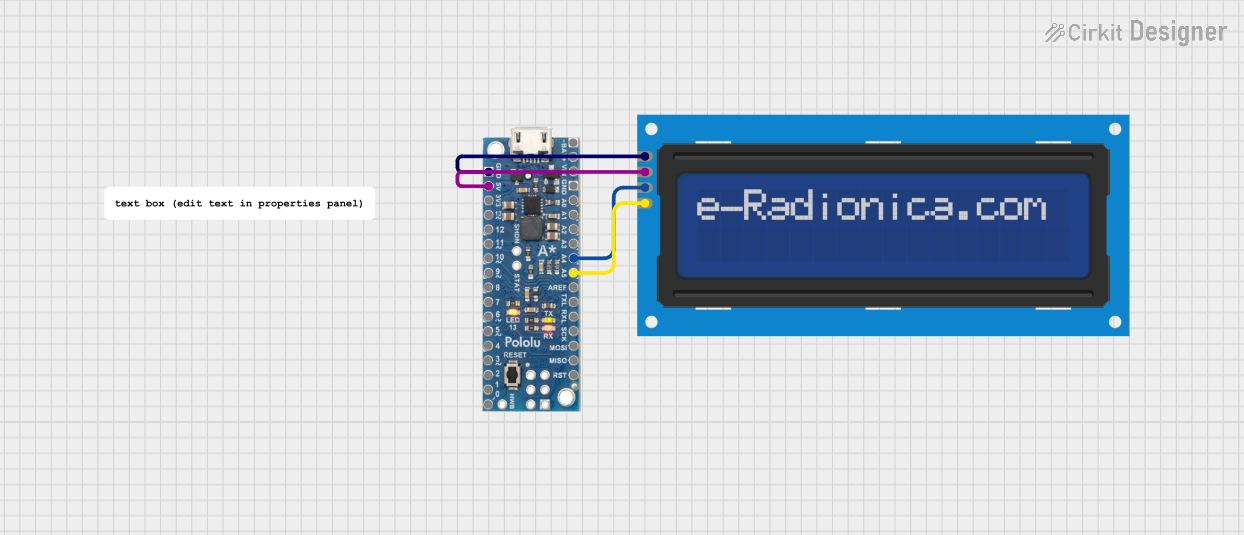
 Open Project in Cirkit Designer
Open Project in Cirkit Designer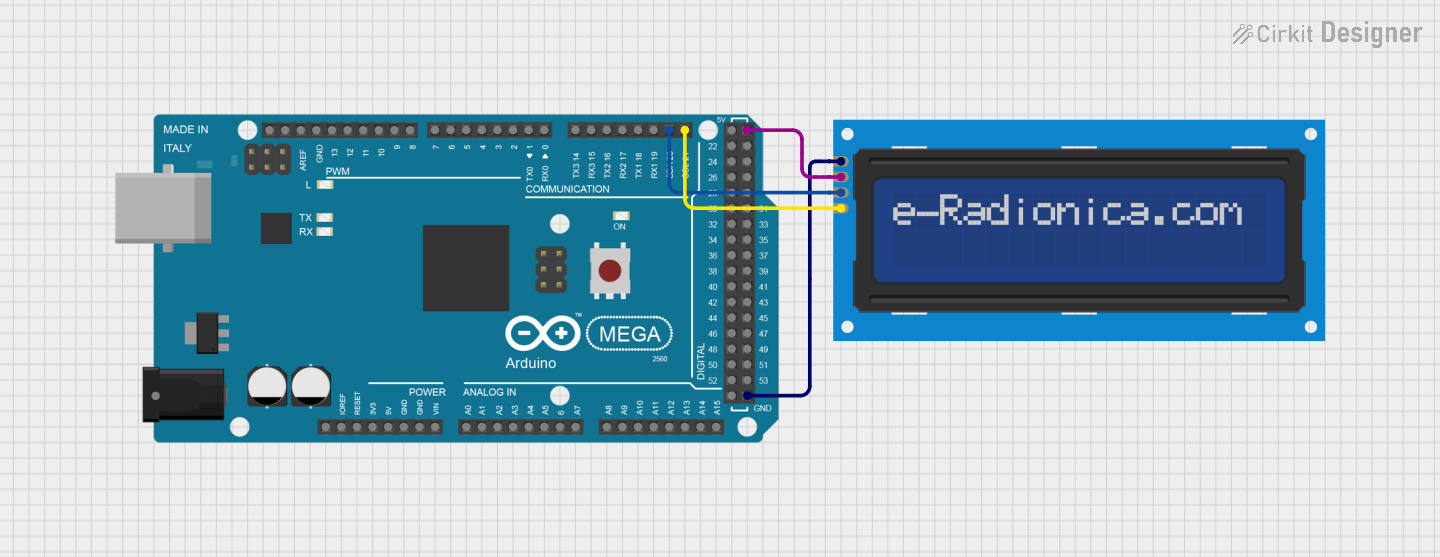
 Open Project in Cirkit Designer
Open Project in Cirkit DesignerExplore Projects Built with LCD 16x2 attached i2c

 Open Project in Cirkit Designer
Open Project in Cirkit Designer
 Open Project in Cirkit Designer
Open Project in Cirkit Designer
 Open Project in Cirkit Designer
Open Project in Cirkit Designer
 Open Project in Cirkit Designer
Open Project in Cirkit DesignerCommon Applications and Use Cases
- Displaying sensor readings (e.g., temperature, humidity, or pressure)
- User interfaces for embedded systems
- Menu systems for microcontroller-based projects
- Real-time clocks and timers
- Educational and prototyping purposes
Technical Specifications
Key Technical Details
- Display Type: 16x2 character LCD
- Interface: I2C (uses PCF8574 I/O expander)
- Operating Voltage: 5V DC
- Backlight: LED backlight (controllable via software)
- I2C Address: Default is
0x27(can vary depending on the module) - Current Consumption: ~20mA (with backlight on)
- Character Size: 5x8 dot matrix per character
- Adjustable Contrast: Via onboard potentiometer
Pin Configuration and Descriptions
The I2C interface reduces the number of pins required to connect the LCD to just four. Below is the pin configuration:
| Pin Name | Description |
|---|---|
| VCC | Power supply (5V DC) |
| GND | Ground |
| SDA | Serial Data Line (I2C data) |
| SCL | Serial Clock Line (I2C clock) |
Usage Instructions
How to Use the Component in a Circuit
Wiring the LCD to a Microcontroller:
- Connect the
VCCpin of the LCD to the 5V pin of the microcontroller. - Connect the
GNDpin of the LCD to the ground (GND) of the microcontroller. - Connect the
SDApin of the LCD to the I2C data pin of the microcontroller (e.g., A4 on Arduino UNO). - Connect the
SCLpin of the LCD to the I2C clock pin of the microcontroller (e.g., A5 on Arduino UNO).
- Connect the
Install Required Libraries:
- Use the Arduino IDE and install the
LiquidCrystal_I2Clibrary. To do this:- Go to Sketch > Include Library > Manage Libraries.
- Search for
LiquidCrystal_I2Cand install the library by Frank de Brabander.
- Use the Arduino IDE and install the
Write and Upload Code:
- Use the example code below to test the LCD.
Example Code for Arduino UNO
#include <Wire.h> // Include the Wire library for I2C communication
#include <LiquidCrystal_I2C.h> // Include the LiquidCrystal_I2C library
// Initialize the LCD with I2C address 0x27, 16 columns, and 2 rows
LiquidCrystal_I2C lcd(0x27, 16, 2);
void setup() {
lcd.begin(); // Initialize the LCD
lcd.backlight(); // Turn on the backlight
lcd.setCursor(0, 0); // Set cursor to the first column, first row
lcd.print("Hello, World!"); // Print a message on the first row
lcd.setCursor(0, 1); // Set cursor to the first column, second row
lcd.print("I2C LCD Test"); // Print a message on the second row
}
void loop() {
// No actions in the loop for this example
}
Important Considerations and Best Practices
- I2C Address: The default I2C address is typically
0x27, but some modules may use0x3For other addresses. Use an I2C scanner sketch to determine the correct address if needed. - Contrast Adjustment: Use the onboard potentiometer to adjust the contrast of the display for optimal visibility.
- Backlight Control: The backlight can be turned on or off programmatically using the
lcd.backlight()andlcd.noBacklight()functions. - Pull-Up Resistors: Ensure that the I2C bus has appropriate pull-up resistors (usually 4.7kΩ or 10kΩ) on the SDA and SCL lines. Many modules include these resistors onboard.
Troubleshooting and FAQs
Common Issues and Solutions
No Display or Blank Screen:
- Verify the wiring connections, especially the SDA and SCL lines.
- Check the power supply voltage (should be 5V).
- Adjust the contrast using the potentiometer on the module.
Incorrect or Garbled Characters:
- Ensure the correct I2C address is being used in the code.
- Verify that the
LiquidCrystal_I2Clibrary is installed and up to date.
Backlight Not Working:
- Check if the backlight is enabled in the code using
lcd.backlight(). - Inspect the module for any physical damage to the backlight circuit.
- Check if the backlight is enabled in the code using
I2C Address Not Detected:
- Use an I2C scanner sketch to detect the module's address.
- Ensure that the SDA and SCL lines are connected to the correct pins on the microcontroller.
FAQs
Q: Can I use this LCD with a 3.3V microcontroller?
A: Yes, but you will need a logic level shifter to safely interface the 3.3V microcontroller with the 5V LCD module.
Q: How do I display custom characters?
A: The LiquidCrystal_I2C library supports custom characters. You can define them using the createChar() function and display them using the write() function.
Q: Can I connect multiple I2C devices to the same bus?
A: Yes, as long as each device has a unique I2C address. If two devices share the same address, you may need to modify the address of one device (if possible) or use an I2C multiplexer.
Q: What is the maximum cable length for I2C communication?
A: The maximum length depends on the pull-up resistors and the speed of communication, but it is generally recommended to keep the cable length under 1 meter for reliable operation.
By following this documentation, you should be able to successfully integrate and use the LCD 16x2 with I2C in your projects!